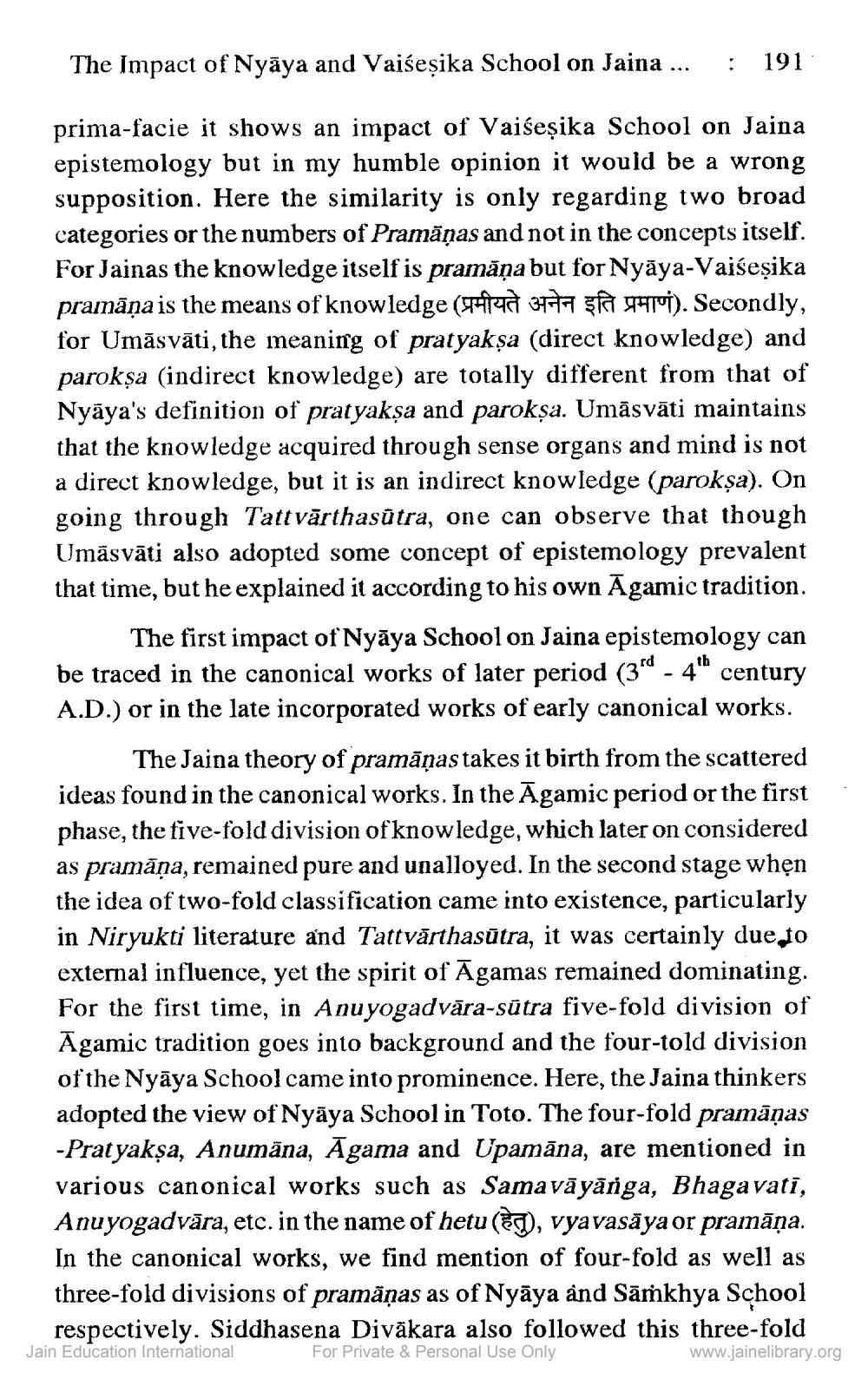________________
The Impact of Nyāya and Vaišeșika School on Jaina ...
: 191
prima-facie it shows an impact of Vaiseșika School on Jaina epistemology but in my humble opinion it would be a wrong supposition. Here the similarity is only regarding two broad categories or the numbers of Pramāṇas and not in the concepts itself. For Jainas the knowledge itself is pramāņa but for Nyāya-Vaiseșika pramnāņa is the means of knowledge (od Tha sfa 1). Secondly, for Umāsvāti, the meaning of pratyakșa (direct knowledge) and parokșa (indirect knowledge) are totally different from that of Nyāya's definition of pratyakșa and parokșa. Umāsvāti maintains that the knowledge acquired through sense organs and mind is not a direct knowledge, but it is an indirect knowledge (parokşa). On going through Tatt vārthasūtra, one can observe that though Umāsvāti also adopted some concept of epistemology prevalent that time, but he explained it according to his own Āgamic tradition.
The first impact of Nyāya School on Jaina epistemology can be traced in the canonical works of later period (3“ - 4" century A.D.) or in the late incorporated works of early canonical works.
The Jaina theory of pramāņas takes it birth from the scattered ideas found in the canonical works. In the Āgamic period or the first phase, the five-fold division of knowledge, which later on considered as pramāņa, remained pure and unalloyed. In the second stage when the idea of two-fold classification came into existence, particularly in Niryukti literature and Tattvārthasūtra, it was certainly due to external influence, yet the spirit of Āgamas remained dominating. For the first time, in Anuyogadvāra-sūtra five-fold division of Āgamic tradition goes into background and the four-told division of the Nyāya School came into prominence. Here, the Jaina thinkers adopted the view of Nyāya School in Toto. The four-fold pramāņas -Pratyakşa, Anumāna, Āgama and Upamāna, are mentioned in various canonical works such as Samavāyānga, Bhagavati, Anuyogadvāra, etc. in the name of hetu (ED), vyavasāya or pramāņa. In the canonical works, we find mention of four-fold as well as three-fold divisions of pramäņas as of Nyāya and Sāṁkhya School
respectively. Siddhasena Divākara also followed this three-fold Jain Education International For Private & Personal Use Only
www.jainelibrary.org




